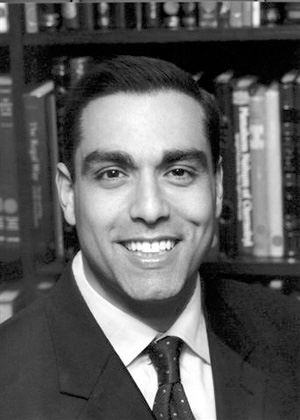It’s time to recite the Shema!
Published April 2, 2014
Each year as I sit down to begin my preparations for facilitating our Pesach s’darim (seders), I ask myself the same question: Which parts of the Haggadah are most meaningful to me, and which sections might speak poignantly to the hearts of the family, longtime friends and guests who will gather at our Yontiff table? After all, the Passover rite is so very rich, filled to overflowing with gems that can inspire and illuminate our lives in ways that can be profoundly transformational.
The iconoclastic Hasidic Master, Rabbi Nachman of Bratslav, taught that the Geulah from Mitzrayim, the Redemption of our ancestors from the servitude of Egypt, was an act of unparalleled Divine Grace. The Children of Israel at that time were completely undeserving of God’s love and compassion because they had, for the most part, forgotten that there was a Creator who had called them into being and charged them with a unique mission.
And yet, the Almighty took note of our progenitors and released them from their oppressive bondage. However, in this day and age, salvation will not come unless we ourselves express a deep yearning and longing to feel God’s presence. We will never experience true freedom until we invite God into our lives, until we labor to stimulate, induce and evoke God’s consciousness within the chambers of our hearts and the recesses of our souls (Likkutei Mohran 2:74).
With this powerful teaching in mind, we can shed some fresh light on one of the most famous and yet often overlooked selections of our Seder service. In the Maggid section of the Haggadah, we encounter the following tale:
“Once, Rabbi Eliezer, Rabbi Yehoshua, Rabbi Elazar Ben Azaryah, Rabbi Akiva and Rabbi Tarfon were participating in a Seder in B’nai Berak. They were discussing the Exodus from Egypt all that night until their students came and said to them: ‘Our Masters, the time has come to pray the morning Shema.’ ”
At first blush, it seems like a rather straightforward and unremarkable story. A group of excitable rabbis become utterly engrossed with “waxing poetic,” endlessly excogitating upon the experience of Yetziat Mitzrayim, the Exodus from Egypt. Their passion for discussing and debating what actually transpired understandably distracts them to the point that they forget about the Mitzvah to pray, the command to recite the Shema in its appointed time. Their dutiful students, concerned about punctilious maintenance of ritual norms, rein in their teachers by reminding them of their requirement to pray the morning service.
Yet, as I revisited this anecdote with the above-mentioned teaching of Reb Nachman in mind, I realized that the story may have yet another lesson to share. The students of the “B’nai Berak Five” may very well have been concerned with far more than adherence to established ritual requirements. In fact, one could easily make the case that HaOsek BeMitzvah, Patur Min HaMitzvah (Babylonian Talmud, Tractate Sukkah 25A) – one who is engaged in one commandment is exempt from another – and therefore, the rabbis should not have been interrupted from the mitzvah of retelling the miraculous events of the liberation from Egyptian slavery.
So what, then, were these young scholars doing when they reminded their elders of the need to recite the morning Shema? It seems to me that their message was one of great import, not only for those who lived in their time, but also for us in our contemporary milieu. The main goal of the Passover seder is to help us feel the presence of Divinity in our lives. In fact, the seder has no less than 15 distinct sections or steps. Written in Hebrew letters, the number 15 is Yud and Hay pronounced YAH, an abbreviated name for God. The entire seder exercise is intended to help us gain awareness and consciousness of God’s active participation in history and in our own lives.
The students in our tale from the Haggadah were reminding their teachers not only of the significance of religious obligations, but also of the need to take the theoretical and give it additional consequence by turning it into practice. Their insight was that retelling the drama of the Exodus was beautiful, but not sufficient. In order to achieve the seder’s goal of evoking God’s presence, they needed to invoke God’s name. And what better way to do so than by declaring the most central and crucial of Jewish prayers: “Shema Yisrael, Adonai Eloheynu, Adonai Echad – Listen Israel, The Lord is our God, the Lord is Unique!”
As we prepare to sit down at our seder tables, may we learn well the lessons of these Talmidei Chachamim – these wise students. May we use the precious moments of the retelling of our miraculous deliverance to not only recall the Exodus, but also catalyze God’s palpable existence in our midst. And thus hasten the advent of redemption in our era as in days of yore.















